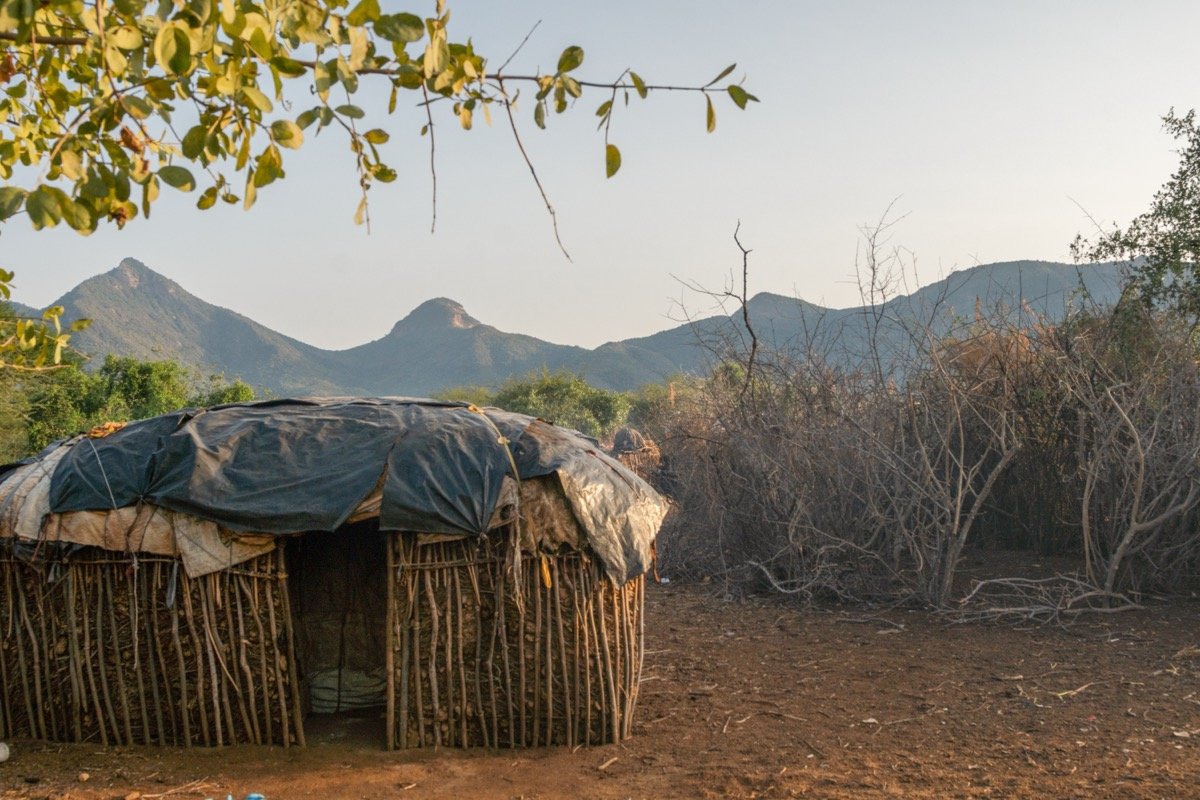The Heart of the Samburu: Inside the Manyatta
Dotted across the vast landscape of Northern Kenya, the striking Samburu homesteads, known as manyattas, stand as iconic symbols of Samburu culture — just as iconic as the elephants who roam this land.
The Samburu are nomadic pastoralists who move their livestock in pursuit of fresh grazing and water. The construction of a manyatta marks the establishment of a new temporary settlement. This is a vibrant demonstration of resilience and adaptability, fundamental traits of the indigenous Samburu people.
Strategic Settlement
Interestingly, despite the arid conditions of Kenya’s northern frontier, manyattas are strategically placed away from water sources and trees. This deliberate distancing from water helps minimise encounters with wildlife. Similarly, the absence of overhead tree cover prevents predators like leopards from gaining easy access to livestock - the Samburu’s wealth.
The doors of Samburu manyattas are intentionally positioned to face the sacred mountains, Mount Ololokwe and Mount Nyiro. This orientation allows the women, as they step out to begin their day, to offer their respects to Nkai, the God of nature.
Architectural and Social Harmony
Each manyatta typically houses between five to ten families along with their livestock, creating a micro-community. The homes are constructed from mud, hide, and grass, stretched over poles and arranged in a circular pattern. This layout is not only practical—maximising safety and fostering a tightly-knit community—but also symbolic, reflecting the Samburu's deep connection to each other and their environment.
A robust fence of thorn or brushwood encircles the manyatta, serving as a barrier against the encroachment of wild animals. This communal living arrangement amplifies the Samburu’s communal ethos, famously encapsulated in the phrase, "It takes a village to raise a child." Here, mothers collaborate in rearing their children, sharing daily tasks and responsibilities like sisters.
Living in Harmony
The sense of kinship and cooperation extends beyond familial ties, permeating every aspect of daily life. Men band together as they venture out to tend to bigger livestock like cows and camels, while women collectively care for children, fetch water and look after the goats. This close-knit living arrangement enhances communication, connection, and mutual support within the community, reinforcing the bonds that define Samburu society.
The Role of Women
The responsibility of building and maintaining the manyattas rests with the women. This task demands skill and dedication, as the structures require constant attention. Their efforts ensure not just the physical but also the social fabric of the manyatta—circular by design, not just for security, but as a metaphor for the circle of life and community.
Cultural and Seasonal Dynamics
The manyatta's composition may shift with the seasons. During drier periods, younger family members often venture to distant pastures in search of better grazing, staying in temporary camps until the rains return. This fluidity ensures the community's sustainability and reflects the dynamic nature of Samburu life.






